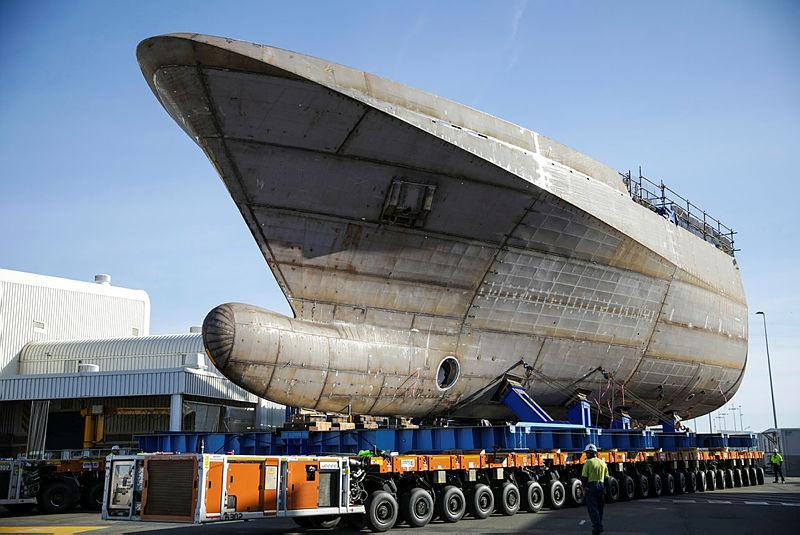Defence shouldn’t be spared when government pays off coronavirus debt
Posted By David Andrews on May 1, 2020 @ 06:00
In October 2019, Defence Minister Linda Reynolds announced [1] that ‘Defence is working through a re-assessment of the strategic underpinnings of the 2016 Defence White Paper’. The review was to be completed in early 2020. Given the significant global impact of Covid-19, and with it the government’s stimulus spending, a more comprehensive examination is required to determine whether the plans set out in the white paper are still credible and appropriate for Australia’s strategic circumstances.
The scale of economic disruption that is emerging with the Covid-19 pandemic has led inevitably to comparisons with the 2008–09 global financial crisis. For Australia’s defence community, one of the enduring legacies of the financial crisis was that it threw the capability acquisition and funding plans of the 2009 white paper into disarray, and consequently rendered much of that document moot.
In 2009 [2] the government had to account for $51 billion in emergency stimulus spending. Covid-19-related spending measures have already reached [3] $214 billion in direct stimulus, with a further $90 billion in government bonds underwritten through the Reserve Bank of Australia.
We don’t know how far this crisis still has to run, and whether the spending will stop there, but the scale of support is unheard of in a peacetime setting. The only thing we can be certain of is that any chance of the budget being back in the black in the near future is remote.
On 8 April, Reynolds reiterated [4] the government’s commitment to the delivery, on time and on budget, of the new submarines and frigates for the Royal Australian Navy, noting that they’re a sovereign necessity and Covid-19 hadn’t changed that requirement. The 2016 white paper funding model [5] showed defence spending increasing to 2.2% of GDP by 2022–23, which included [6] $135 billion for naval shipbuilding and $20 billion for new armoured vehicles, as well as other new capabilities such as large unmanned aerial systems, self-propelled howitzers, land-based anti-ship missile systems, and replacements for the Tiger helicopters.
The regional security environment is arguably more complex now that it has been in several decades, and it is unquestionably prudent—given the uncertainty in Australia’s strategic outlook, the expanding US–China competition in Asia and the Pacific, and the undermining of the existing regional order—to ensure that Australia can act independently in support of our interests in the region. This requires building and maintaining a defence force that is well equipped and fit for purpose.
As Reynolds acknowledged in her speech, the speed of change in Asia had been underestimated in the 2016 assessment. However, in light of the already huge financial impact of Covid-19 on the budget’s bottom line, trade-offs seem unavoidable.
Will this mean that Defence acquires fewer F-35 fighters, or makes savings by building the Attack-class submarines offshore? Are self-propelled howitzers and new armed reconnaissance helicopters still priorities, or can existing capabilities be extended? Does the Australian Defence Force need to retain every platform in the current inventory, or will it phase out systems like the Abrams tank, as the US Marine Corps [7] is now planning on doing?
Defence has lived a somewhat blessed budgetary existence in recent years, especially when compared with the other two key pillars of Australia’s foreign policy—the diplomatic network and aid budget. The foreign aid budget [8] has fallen by 27% since 2013–14, and the Department of Foreign Affairs and Trade’s combined diplomacy and aid budget is less than one-ninth [9] that of Defence. If the government is to press ahead with its force structure plans, despite the fundamentally altered financial position we find ourselves in, then those plans need to be justified afresh.
In addition to the naval shipbuilding plan, the government has rededicated itself [10] to the planned $158 billion in tax cuts, and ruled out considering changes to franking credits. Even if those changes were to be made, there could still be a shortfall of billions of dollars in the forward estimates.
Defence cannot expect to be excused from the anticipated savings and reform measures that the government will look to outline in the rescheduled October budget, particularly on the basis of a plan that the government admits hasn’t kept up with our strategic circumstances.
It’s imperative that the government make a clear, convincing case to the public for why expenditure on the scale that Defence is undertaking remains strategically, and indeed morally, sound amid the health crisis and financial downturn. This requires more than a brief update to the 2016 white paper policy settings and force structure plan.
The existing plans have been overtaken by events, so without a thorough, detailed justification of how Australia’s dramatically diminished means still match the government’s desired ends, Defence cannot design realistic and achievable ways.
Article printed from The Strategist: https://aspistrategist.ru
URL to article: /defence-shouldnt-be-spared-when-government-pays-off-coronavirus-debt/
URLs in this post:
[1] announced: https://www.minister.defence.gov.au/minister/lreynolds/speeches/royal-australian-navy-sea-power-conference-international-convention
[2] 2009: https://www.abc.net.au/news/2020-04-05/coronavirus-data-stimulus-spending-dwarfs-gfc-chart/12115518
[3] already reached: https://www.theaustralian.com.au/business/economics/coronavirus-prepare-to-be-hit-but-well-ease-economic-blow-says-rba/news-story/c0eb223cf8f0358bcc754d19cf6df2f4
[4] reiterated: https://www.theaustralian.com.au/nation/defence/australias-hunterclass-frigates-attackclass-submarines-will-be-delivered-on-time/news-story/9ce674784c22047c23ffe1f283fb17e6
[5] funding model: /the-cost-of-defence-beyond-2-of-gdp/
[6] included: https://www.defence.gov.au/WhitePaper/Docs/2016-Defence-Integrated-Investment-Program.pdf
[7] US Marine Corps: https://www.economist.com/united-states/2020/04/02/the-us-marine-corps-sheds-its-tanks-and-returns-to-its-naval-roots
[8] foreign aid budget: https://www.lowyinstitute.org/the-interpreter/budget-2019-aid-downward-trend
[9] one-ninth: https://pursuit.unimelb.edu.au/articles/australia-s-incredible-shrinking-department-of-foreign-affairs-and-trade
[10] rededicated itself: https://www.smh.com.au/politics/federal/someone-has-to-pay-it-back-franking-credit-campaigner-open-to-policy-change-20200401-p54g41.html
Click here to print.
